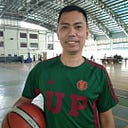Little Vietnam in Bataan
by Oliver Carlos
I have been to the province of Bataan only once (so far). It was during the semestral break of my second year in college. I have a dated photograph of that vacation, it reads October 19, 1990. Although the place was on Philippine soil, it felt like I was abroad. I visited a Vietnamese refugee camp. My companions were my cousin Sheyenne “Chin-Chin” Hidalgo, who was a UPLB student like me; and Danny Mercado, a friend from church, who was a young UPLB instructor at that time. The three of us stayed in the housing unit of Chin-Chin’s mother Mary Ann, who was my aunt. She was working there in the camp.
It was Auntie Mary Ann who invited us to come and see her workplace. She had been working there as a teacher for years. I was interested because I’m about to start taking up my major courses in college the next semester. My field focused on community organizing and social work. I thought this would be a perfect exposure trip for me.
The trip to Morong, Bataan was long. The SCTEX and the Bataan ferry service weren’t existing yet in 1990. Chin-Chin, Danny, and I left Los Banos very early. When we reached Manila, we boarded a large bus going to Bataan’s capital, Balanga. That town was on the east coast of the Bataan peninsula, overlooking Manila Bay. Our target destination was Morong, which was on the west coast of the province, overlooking the West Philippine Sea. We rode a little green bus from Balanga to Morong. The bus had no aircon, it only had wooden boards for windows that were removable. Once removed, we now have an aircon- aircontinuous!
The bus ride across the peninsula was dizzying, the road had lots of ups-and-downs, and twists-and-turns. Along the way, we saw Mt. Samat with its giant cross at the peak. We also saw the Bataan nuclear power plant.
The refugee camp was a big eye-opener for me. I saw lots of Vietnamese, most of them were my age. Many of them were Amerasians, or children of US soldiers who served in the Vietnam War. They looked very Caucasian, but they had difficulty speaking in English. The refugees were there in Bataan studying the English language and American culture. Soon they will fly to the United States to begin a new life.
The refugees lived in simple wooden cottages. They cultivated mint plants in their yards. A few houses had an eatery up front. They cooked and sold Vietnamese food. We tried some dishes, and they were good! I noticed they put fresh mint leaves on everything they eat.
One day, Danny tried making friends with the refugees by starting a casual conversation with them. He also shared the Gospel to the Vietnamese in their homes. We accompanied him cottage by cottage. Danny used a little blue Gideon’s Bible, it had a Vietnamese translation of John 3:16 that he showed around. I noticed that the Vietnamese people had a hard time understanding “God” and “sin”. They lived in a communist country wherein any form of religion was banned. Danny sure had his hands full explaining these things in sign language and broken English.
I admire Danny for doing his best in sharing the Gospel to as many people as he can. I can see God’s love and concern thru him on that day. I thank God for Auntie Mary Ann who made that sem break meaningful. God loves the Vietnamese refugees with the same love he has for me and you. Danny tried to communicate that to them. God wanted them saved. God wanted people to go to heaven, people from every nation and tribe. We read in John 3:16 (NIV):
“For God so loved the world that he gave his one and only Son, that whoever believes in him shall not perish but have eternal life.”
We have memorized this verse a thousand times and can recite this automatically like a machine. But for a Vietnamese refugee in 1990, this was an eye-opener, or rather a life-opener. I believe the seeds Danny planted in their lives more than 30 years ago have sprouted one way or another.
I heard the camp is no longer existing today and all of the Vietnamese who took refuge there are now living in the US. The Filipino teachers and staff of the camp have also found jobs elsewhere. Auntie Mary Ann and Chin-Chin have likewise migrated to the US, and Danny is now the senior pastor of our church. It’s great to look back and see that once upon a time our paths have crossed in that secluded place in Bataan. One day, we’ll have a grand reunion in heaven.
